BAE Unveils 1st Amphibious Combat Vehicle For Marines
Posted on
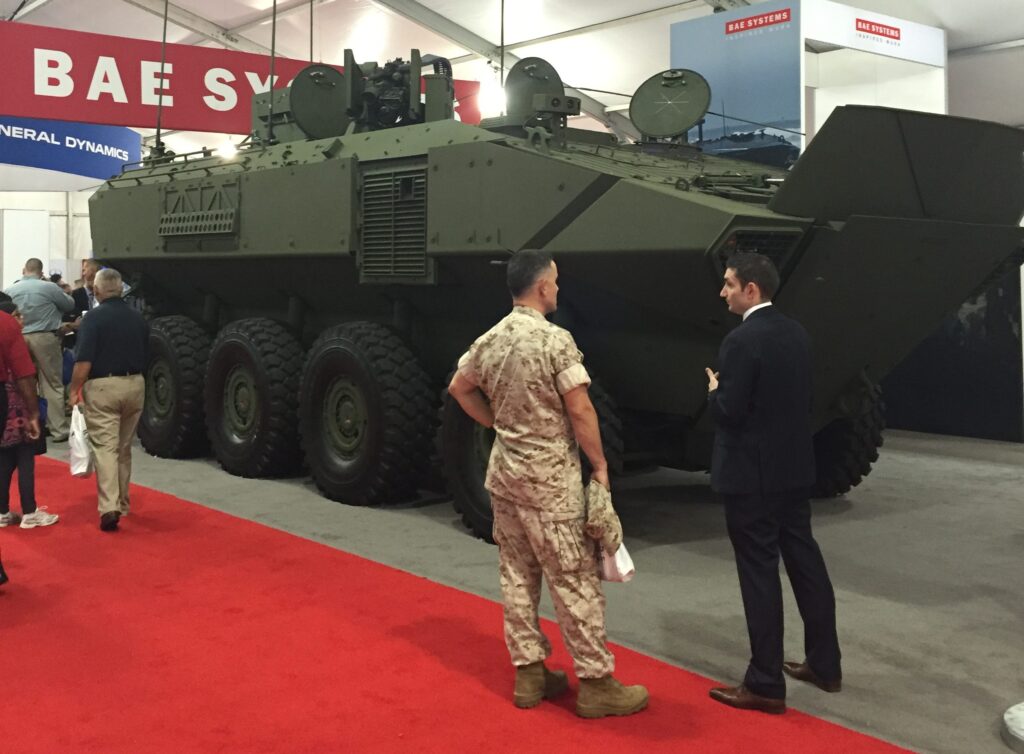
BAE Systems Amphibious Combat Vehicle at Modern Day Marine Credit: BAE Systems
After years of prototype testing, canceled programs, and rewritten requirements, contractor BAE Systems has unveiled the first production model of its 34-ton, eight-wheel-drive Amphibious Combat Vehicle at the Modern Day Marine show. BAE and SAIC are competing to replace the Marine Corps’ aging, ungainly, and thinly armored Amphibious Assault Vehicles.
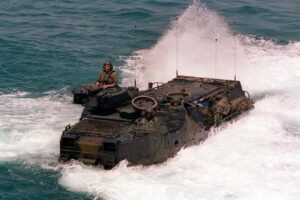
The Marine Corps’s current Amphibious Assault Vehicle, the 1970s-vintage AAV-7.
The AAVs are huge tracked machines with boat-like hulls, which proved deathtraps when they hit large roadside bombs in Afghanistan and Iraq. BAE says its 8×8 ACV is more survivable and more agile on land than the current AAV, with equal performance on the water. That’s huge.
Amphibious assault is the Marines’ raison d’être, neglected during the long land wars since 9/11, which the service is now striving to revive. Because the swim from ship to beach is a relatively short part of an amphibious operation, followed by much more maneuvering ashore, the brass were willing to sacrifice some performance on the water to get better survivability and mobility on land. At least, they were willing to sacrifice in the short term: The current ACV 1.1 competition allows limited amphibious capability, but the ultimate ACV 1.2 will have to equal the old AAV.
In essence, BAE is saying it can offer ACV 1.2 performance in their offering for ACV 1.1. That’s what the Marines were hoping for with the BAE and SAIC vehicles, but this is the first we’ve heard a contractor promise it.
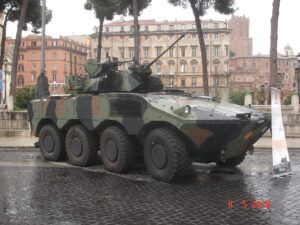
IVECO Freccia Infantry Fighting Vehicle in Rome.
How? “BAE systems circumnavigated the globe looking for the optimum partner,” BAE program manager John Swift told me this morning. They found Italy’s IVECO, a defense subsidiary of famous auto-maker Fiat — which already had a design that met the Marine Corps requirement, the SuperAV. The Italians will make key components but hull construction and final assembly will take place in BAE’s York, Pennsylvania plant.
(Rival SAIC has likewise teamed with Singapore Technologies to offer their Terrex vehicle. Having long favored tracks, the US simply isn’t the leader in wheeled armored fighting vehicles: The two 8×8 machines already in service, the Army Stryker and the Marine LAV, are both derived from the Swiss MOWAG Piranha).
IVECO had long built a family of wheeled armored vehicles for the Italian military. The Centauro tank destroyer evolved into the Freccia troop carrier, and, most recently, into the SuperAV amphibious vehicle. The Italian Marines, like the Americans, used the 1970s-vintage AAV and knew they needed to replace it. But while the USMC tried and failed to develop a super-fast amphibious vehicle, a kind of waterskiing tank, the relatively cash-strapped Italians decided to simply upgrade an existing, proven design to an amphibious capability equal to the old AAV.
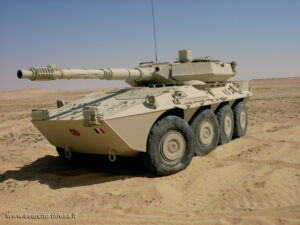
IVECO Centauro tank destroyer in Iraq
“They designed the 8×8 to be fully amphibious,” Swift said: “a vehicle that could self-launch and recover from an amphibious ship,” able to move at six knots and endure moderately troubled seas (Sea State 4).
BAE’s ACV offering is simply an upgraded SuperAV, which is, in turn, an upgraded Freccia, which is an upgraded Centauro. BAE and IVECO took the Italian SuperAV design and tweaked it for the Marines. Most notably, they added bigger tires, upgunned the transmission, and rebored the engine to add 40 percent more horsepower. Those changes allows the ACV to carry more protection, more troops — a full squad of 13 Marines, plus three crew — and more future upgrades, such as bigger gun or add-on armor.
“The vehicle we have here today is our first production vehicle,” which came off the production line “a couple of weeks ago,” said Swift. It’ll begin BAE’s own internal testing in two weeks, he went on, and “we will present it to the government in December,” along with the test results.
“By contract we don’t have to deliver vehicles until April, but we want to deliver early,” Swift said. There’s a lot of pride at stake for BAE, said Swift, a retired Marine tanker himself: Since 1941, every Marine Corps amphibious vehicle — including the current AAV — has been built by BAE systems or one of its predecessor companies. That’s a streak BAE’s determined not to break.
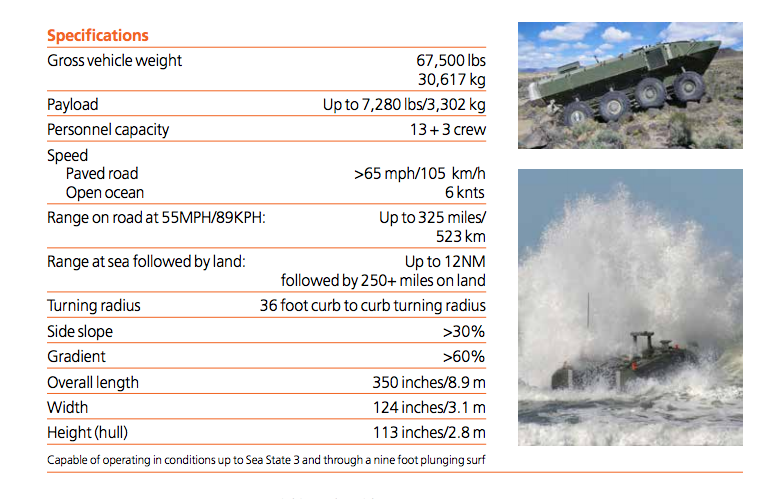
BAE Systems ACV spec sheet
Subscribe to our newsletter
Promotions, new products and sales. Directly to your inbox.
